Championing Women’s Rights since ’46 – Women Really Shine! 🌟
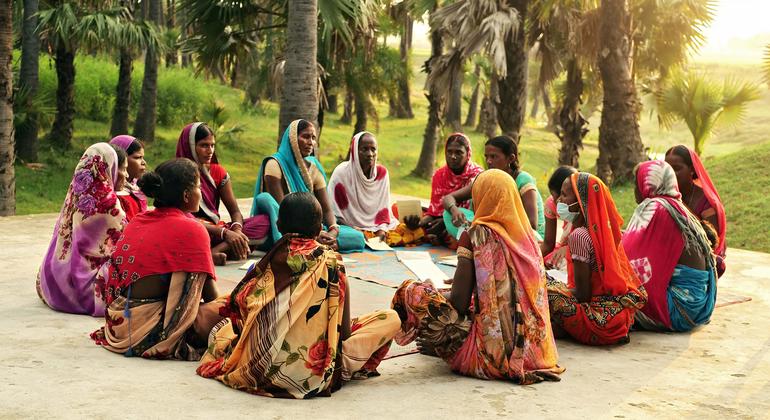 The annual UN Commission on the Status of Women (CSW) meets in March each year to address the widespread inequalities, violence and discrimination women continue to face, all around the world. Here is a brief five-point guide to this high-profile UN event.
The annual UN Commission on the Status of Women (CSW) meets in March each year to address the widespread inequalities, violence and discrimination women continue to face, all around the world. Here is a brief five-point guide to this high-profile UN event.
At current rates, it will take almost another three centuries to bring about equality for women and girls.
Hobbled by persistent inequalities, about 383 million women and girls live in extreme poverty, and every 11 minutes, a woman or girl is killed by someone in her own family.
These are some of the reasons that the CSW continues to be relevant and has been a vitally important fixture on the United Nations calendar ever since it was first convened, shortly after the creation of the UN itself.
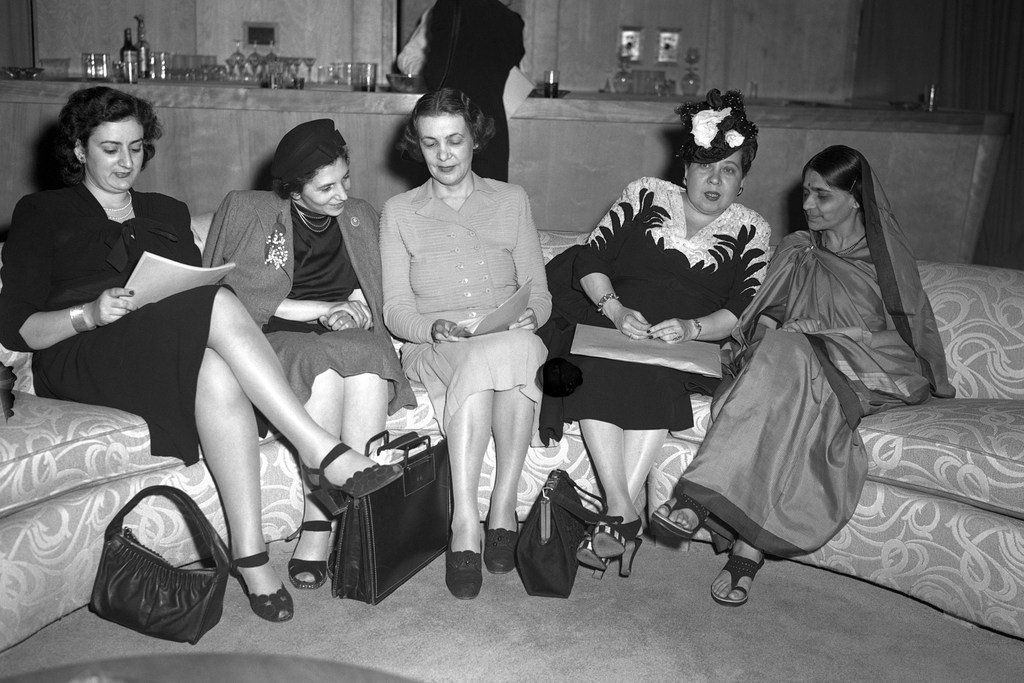
UN Photo
Sub-commission on the Status of Women members, from Lebanon, Poland, Denmark, Dominican Republic, and India, prepare for a press conference at Hunter College in New York on 14 May 1946.
1. Pushing for action for eight decades
The work of the Commission began in 1946, days after the UN General Assembly’s inaugural meetings heard former US First Lady Eleanor Roosevelt and part of the country’s delegation, read an open letter addressed to “the women of the world”.
Ms. Roosevelt had called “on the Governments of the world to encourage women everywhere to take a more active part in national and international affairs, and on women who are conscious of their opportunities to come forward and share in the work of peace and reconstruction as they did in war and resistance”.
The UN’s Economic and Social Affairs Commission (ECOSOC) promptly established a sub-commission. Its six members – China, Denmark, Dominican Republic, France, India, Lebanon, and Poland – were tasked with assessing “problems relating to the status of women” to advise the UN Commission on Human Rights, a precursor to the UN Human Rights Council.
In its first report, “members considered that the work of the sub-commission should last until women had reached the point where they were on equal footing with men in all fields of human enterprise”.
From the beginning there were calls for action, including prioritizing political rights, “since little progress could be made without them”, alongside recommendations for improvements in civil educational, social, and economic fields, by which “problems should be attacked simultaneously”, the report said. In addition, the report called for a “United Nations Women’s Conference to further the programme.”
By June 1946, it formally became the Commission on the Status of Women, as one of ECOSOC’s subsidiary bodies. From 1947 to 1962, the Commission focused on setting standards and formulating international conventions to change discriminatory legislation and foster global awareness of women’s issues.
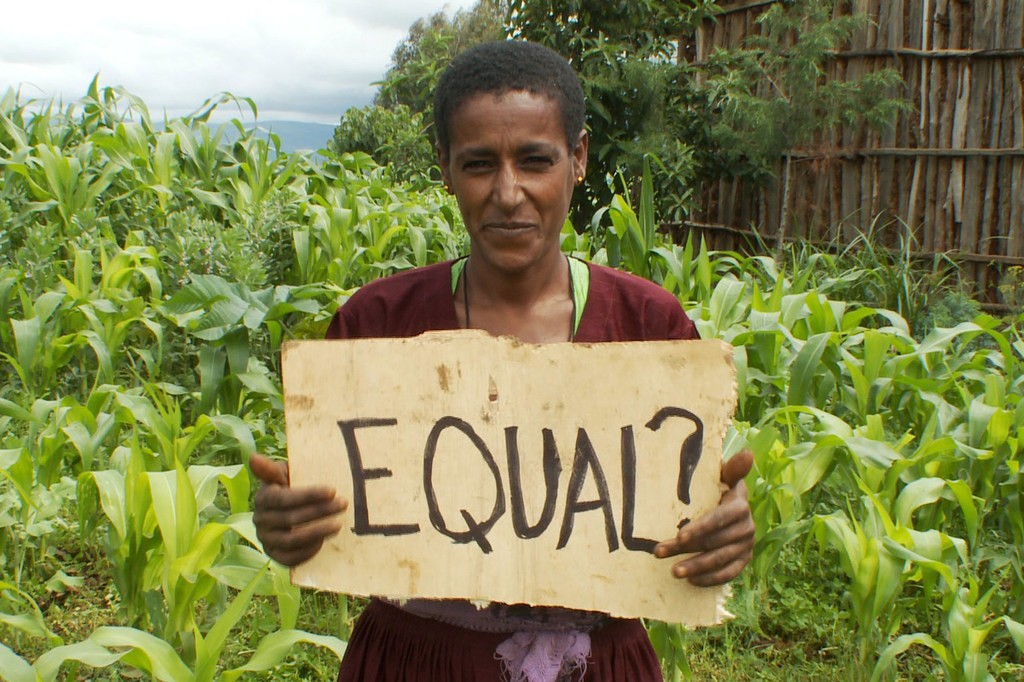
© World Bank/Dana Smillie
A farmer in Biresaw, Ethiopia.
2. Landmark international agreements struck
Dating back to the Commission’s early days, its growing membership contributed to some of the most widely agreed upon international conventions in UN history. Here are just a few.
Helping Ms. Roosevelt, chair of the drafting committee for the Universal Declaration of Human Rights, the Commission had successfully argued against references to “men” as a synonym for humanity. It also introduced new, more inclusive language in the final version the General Assembly adopted in 1948.
In 1963, efforts to consolidate standards on women’s rights led the General Assembly to request the Commission to draft a Declaration on the Elimination of Discrimination against Women, which the world body adopted in 1967.
CSW was pivotal in the adoption of the 1995 Beijing Declaration and Platform for Action, the key global policy document on gender equality.
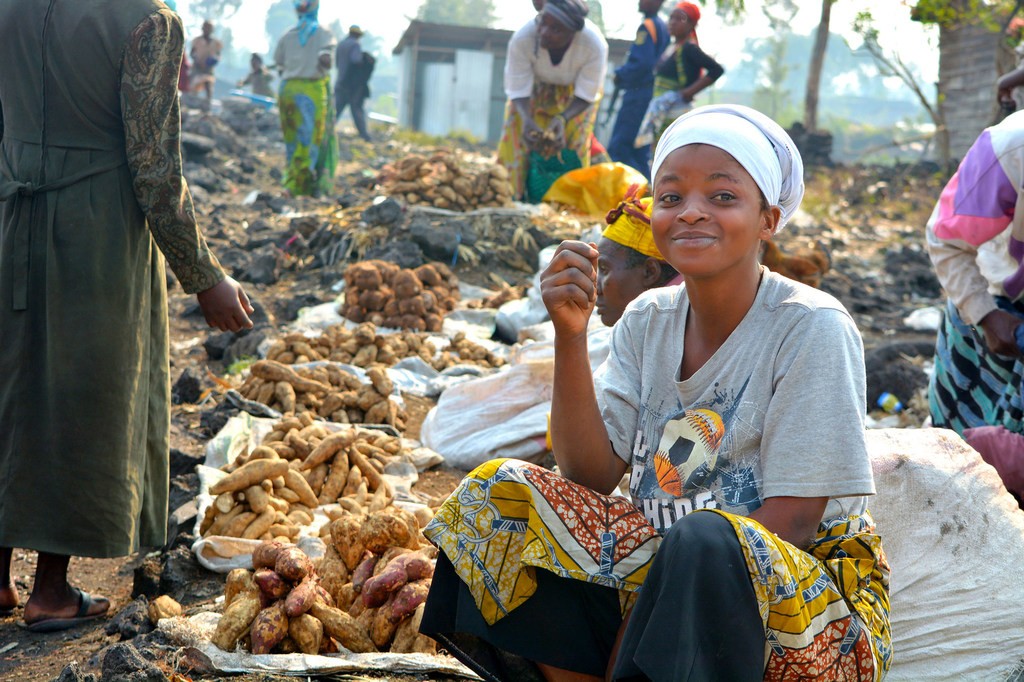
UN Women/Carlos Ngeleka
A woman sells food at a market in the Democratic Republic of the Congo.
3. More countries, more needs
With a growing UN membership and mounting evidence in the 1960s that women were disproportionately affected by poverty, CSW focused on women’s needs in community and rural development, agricultural work, family planning, and scientific and technological advances. It also encouraged the UN system to expand technical assistance to further the advancement of women, especially in developing countries.
Advanced work in this regard, CSW also drafted the legally binding Convention on the Elimination of All Forms of Discrimination against Women (CEDAW) in 1979.
During this decade, the UN declared 1975 the International Year of Women and convened the first World Conference on Women, held in Mexico. In 1977, the UN formally recognized International Women’s Day, observed on 8 March.
In 2010, after years of negotiations, the General Assembly adopted a resolution consolidating the Organization’s related sections and departments into the UN Entity for Gender Equality and the Empowerment of Women (UN Women), which continues to collaborate closely with the Commission.
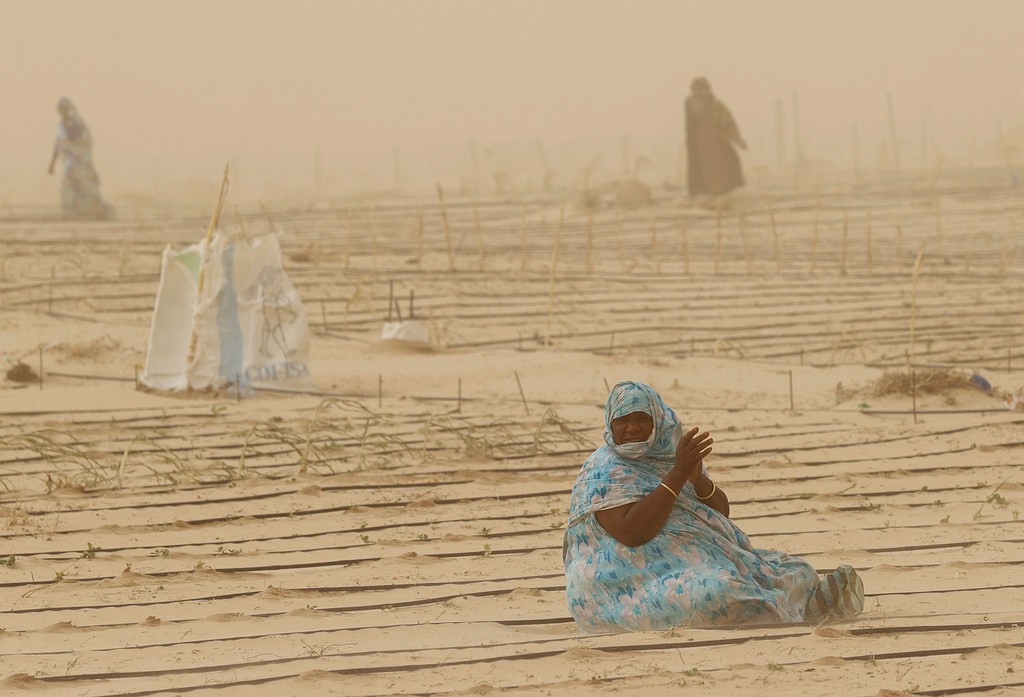
Jose Manuel Moya
Climate change has made the life of women farmers more difficult in recent years.
4. Addressing emerging issues
Annual sessions address and assess emerging issues along with progress and gaps in implementing the Beijing Platform for Action. Member States then agree on further steps to speed progress. Since 2018, CSW has addressed such challenges as climate change, gender-based violence, and ensuring women’s full participating in decision-making and in sustainable development strategies.
Adopting multi-year programmes of work to appraise progress and make further recommendations to accelerate the implementation of the Platform for Action, CSW sends its negotiated agreed conclusions to ECOSOC for action.
With a view to reaching all women and leaving no one behind, the Commission also contributes to the follow-up to the 2030 Agenda for Sustainable Development to accelerate the realization of gender equality and the empowerment of women.
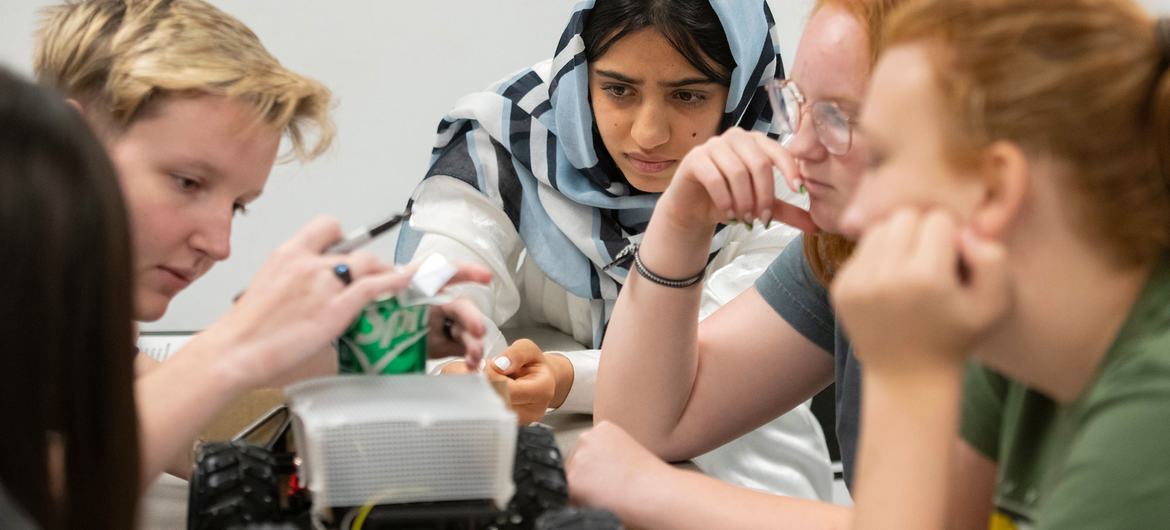
© Missouri S&T/Michael Pierce
Students at the Missouri University of Science and Technology in the US undertake a robotics project.
5. Tackling 21st century challenges
It’s become increasingly apparent that the ongoing discrimination, abuse, and misogyny women face in the physical world is mirrored in the virtual world.
These twenty-first century issues are being addressed at the 2023 CSW session, which is aimed at levelling the digital playing field to address, among other things, limited access to technology, disproportionate online violence, and underrepresentation and gender bias in tech industries.
The Commission’s 45 members will discuss innovation and technological change, and education in the digital age for achieving gender equality and the empowerment of all women and girls, at its first in-person meeting since the COVID-19 pandemic began in 2020.
More than 7,000 stakeholders attended the previous in-person session, CSW63, including nearly 2,000 Member State delegates, 86 ministers, and 5,000 representatives from civil society organizations around the world.
This year’s Commission on the Status of Women takes place at UN Headquarters in New York from 06 to 17 March. Find out more here.
To learn about more CSWs past and present, visit UN Women’s A Short History of the Commission on the Status of Women.
Simon Blake is an experienced journalist deeply interested in international affairs and global development. Having spent years reporting on humanitarian issues, he offers a unique perspective in his coverage of United Nations news.




As Ava Smith, I strongly believe that the CSW has been a crucial platform for advancing women’s rights since 1946. The ongoing fight against inequalities, poverty, and violence faced by women and girls highlights the urgent need for continued action and advocacy. The persistence of these issues underscores the significance of the CSW and its role on the international stage.
Why is it taking so long to achieve equality for women and girls despite the efforts of CSW since 1946?
Improving gender equality is a complex process that requires continuous effort and societal changes. While significant progress has been made since 1946, deep-rooted inequalities and cultural norms still pose challenges that take time to overcome. The CSW plays a crucial role in promoting awareness and advocating for policy changes to address these issues, but overcoming centuries of discrimination and violence against women takes persistent dedication and coordinated actions on a global scale.
How can we accelerate progress and shorten the timeline to achieve equality for women and girls?
To accelerate progress towards equality for women and girls, we must prioritize addressing systemic barriers, advocating for legislative changes, and fostering a culture of inclusivity and gender equality in all aspects of society. It requires collective action, strong leadership, and unwavering commitment to dismantle discriminatory practices and promote empowerment for women and girls worldwide.
What steps can individuals take to accelerate progress towards gender equality, especially considering the alarming statistics mentioned in the article?
To accelerate progress towards gender equality, individuals can start by advocating for equal opportunities in their workplaces, supporting organizations that empower women, educating themselves and others on gender issues, and actively challenging gender stereotypes in their daily interactions. Small actions can lead to significant change!
It’s disheartening to see that after decades of efforts, women and girls still face such profound inequalities and violence. It’s high time for concrete actions to accelerate progress towards gender equality. This UN event plays a crucial role in shedding light on these issues and advocating for lasting change.
Will the annual UN Commission on the Status of Women address new strategies to accelerate progress towards gender equality?
Yes, MeganSmith82, the annual UN Commission on the Status of Women continuously seeks innovative strategies to accelerate progress towards gender equality. It’s crucial for ongoing efforts to achieve equality for women and girls worldwide. Stay tuned for updates on the outcomes of this year’s session!
It’s disheartening to think that at the current rates, it would take almost another three centuries to achieve gender equality. The persistent inequalities and high levels of violence against women underline the urgency for action. The UN Commission on the Status of Women plays a crucial role in addressing these issues and pushing for real change.
Do you think the annual UN Commission on the Status of Women has been successful in making substantial progress towards gender equality since its inception in 1946?
How can we accelerate progress towards gender equality and ensure better outcomes for women and girls at the UN Commission on the Status of Women meeting this year?